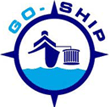

| HOME | |
| ABOUT GO-SHIP | |
| SCIENCE COMMITTEE | |
| REFERENCE SECTIONS | |
| DATA REQUIREMENTS | |
| CRUISE PLANS | |
| JOIN A CRUISE | |
| DATA DIRECTORY | |
| HYDRO MANUAL | |
| DOCUMENTS | |
| BIBLIOGRAPHY | |
| JOIN THE EMAIL LIST | |
| CONTACT | |
Core Measurements, Categories and Submission Timelines
(Version 3.0, February 2016)
The GO-SHIP Committee has grouped GO-SHIP cruises in three different categories, and measurements in three levels of different importance.
Decadal full GO-SHIP: Level 1 data are of highest priority to fulfill the scientific objectives of the GO-SHIP cruises. Level 1 data should be collected at least once per decade on all lines of the GO-SHIP network.
Cruises which are repeated at higher frequency (categories below) may collect limited parameters, but full level 1 remains the GO-SHIP recommendation for cruises of all categories.
High Frequency GO-SHIP: Regular GO-SHIP lines occupied at higher frequencies (yearly, biennial) with limited parameters, but with at least one decadal full GO-SHIP cruise. High frequency cruises must i) occupy the regular line end-to-end, ii) full depth, and iii) comply with the data policy.
Associated GO-SHIP: Repeat hydrographic sections off regular GO-SHIP lines and not necessarily coast-to-coast or coast-to-ice, which i) deliver high quality data, ii) establish full depth stations below 2000m at least every 240nm,
iii) are repeated on decadal frequency or more, at least once per decade with sufficient level 1 parameters to quantify decadal change in inorganic carbon and heat inventories, iv) at a minimum resolution of 60nm, and v) comply with the data policy.
Level 1 data:
- Dissolved
inorganic carbon (DIC)
- Total
Alkalinity (TAlk)
- pH
- CTD
pressure, temperature, salinity (calculated)
- CTD oxygen
(sensor)
- Bottle
salinity
- Nutrients
by standard auto analyzer (NO3/NO2, PO4,
SiO3)
- Dissolved
oxygen
- Chlorofluorocarbons
(CFC-11, -12, -113) and SF6
- Surface
underway system (T, S, pCO2)
- ADCP
shipboard
- ADCP
lowered
- Underway
navigation and bathymetry
- Meteorological
data
Level 2 data are highly desirable as augmentation and
addition for the science objectives executed on GO-SHIP cruises. GO-SHIP
recommends that level 2 data should be collected when possible.
Level 2 data:
- Discrete pCO2
- 14C by AMS
- CCl4
- ∂13C
of DIC
- Dissolved
organic carbon
- Dissolved
organic nitrogen
- Fe/trace
metals
- CTD Transmissometer
- Surface
underway system (pCO2, nutrients, O2, Chl, skin temperature)
Level 3 data are ancillary measurements that often
benefit from being taken in conjunction with the core measurements and/or
address a scientific question unique to the region of investigation. They are collected
according to opportunity and space available. They should not significantly
interfere with sampling of level 1 or 2 parameters, and may be regional or
specific to an individual cruise.
Level 3 data (examples):
- Chlorophyll
- Primary
production
- HPLC
pigments
- Experimental
continuous analyzers (such as pH, DIC, and TAlk, and O2/Ar)
- ∂15N
- NO3
- 32Si
- ∂18O
of H2O
- NH4
- Low level
nutrients
- Total
organic phosphorus
- Upper
ocean optical
- Isotopes
of O2
- N2,
Ar, O2
- Methyl
halides
- DMS
Data Policy Timelines
All level 1, 2, and 3 data obtained
on GO-SHIP cruises shall be openly accessible to the community at large. The
following timelines for submission of data are in place. All data should be publically available
preferably through a central data management site. CCHDO has agreed to serve
all GO-SHIP data.
Within 5 weeks of the cruise, released to the relevant data management structure:
- Preliminary
CTD (pressure, temperature, salinity, oxygen if measured)
- A merged
bottle data file including preliminary discrete salinity, oxygen,
nutrients (and inorganic carbon system components)
- Preliminary
CFC-11, CFC-12, CFC-113, SF6
- Underway
data, including continuous (1-minute) navigation, bathymetry, shipboard
meteorological measurements, temperature, salinity, pCO2 (if
measured).
- Shipboard
ADCP data
Within 6 months of the cruise, presuming the 5-week releases of CTD and discrete
salinity data:
- Final
salinity, oxygen, nutrients, CFC, CTD data
- Final
underway data
- Final
shipboard ADCP data
- Final
carbon system parameters (Total CO2 and Total Alkalinity
required; pH, pCO2 if measured)
- CDOM if measured
- Lowered
ADCP (if measured)
- Any other
Level 2 measurements
Within 6 months of shore-based analysis:
- Tritium/helium
- 14C and 13C
- DON if
measured
Within 2 years of analysis: Other discrete sampling programs
that are likely to be carried out on many of the cruises, such as transmissometry and optics, should be submitted to the
relevant data management groups (examples are a JGOFS SMP project for global transmissometry,
and the NASA DAC for optics).